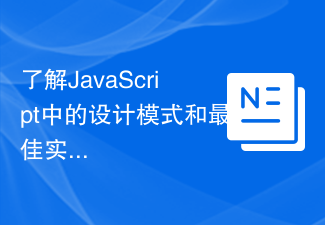Control reversal (IOC) is an important feature of the framework, not a special term for object -oriented programming. It has nothing to do with Dependency Injection (DI) and Dependency Lookup.
Using Spring Developers should have some understanding of the IOC control and reversal function. When you first study, you should know that you use dependency injection to achieve the function of IOC. Several design patterns.
Dependency injection to implement IOC
Dependency injection is the most basic implementation method of IOC and the most commonly used object-oriented design One of the ways. How to inject dependencies to achieve the inversion of control effect, start with an example:
public interface UserQueue {void add(User user);void remove(User user);
User get();
}public abstract class AbstractUserQueue implements UserQueue {protected LinkedList<user> queue = new LinkedList();
@Overridepublic void add(User user) {
queue.addFirst(user);
}
@Overridepublic void remove(User user) {
queue.remove(user);
}
@Overridepublic abstract User get();
}public class UserFifoQueue extends AbstractUserQueue {public User get() {return queue.getLast();
}
}public class UserLifoQueue extends AbstractUserQueue {public User get() {return queue.getFirst();
}
}</user>UserQueue The interface defines public methods for storing in a queue User object. AbstractUserQueue provides some public method implementations for subsequent inherited classes. The last UserFifoQueue and UserLifoQueue implement FIFO and LIFO queues respectively.
This is an effective way to achieve subclass polymorphism.
By creating a client class that depends on the UserQueue abstract type (also known as a service in DI terminology), different implementations can be injected at runtime without having to refactor the code that uses the client class:
public class UserProcessor {private UserQueue userQueue;public UserProcessor(UserQueue userQueue) {this.userQueue = userQueue;
}public void process() {// process queued users here }
}UserProcessor shows that dependency injection is indeed a way of IOC.
We can obtain the dependency on the queue in UserProcessor through some hard-coded methods such as new operation and instantiation directly in the constructor. But this is typical code hard programming, which introduces strong coupling between client classes and their dependencies and greatly reduces testability.
This class declares its dependence on the abstract class UserQueue in the constructor. That is, dependencies are no longer operated by using new in the constructor, but instead are injected externally, either using a dependency injection framework or using the factory or builders pattern.
Using dependency injection, the control of client class dependencies is no longer located in these classes; instead, it is done in the injector, see the following code:
public static void main(String[] args) {
UserFifoQueue fifoQueue = new UserFifoQueue();
fifoQueue.add(new User("user1"));
fifoQueue.add(new User("user2"));
fifoQueue.add(new User("user3"));
UserProcessor userProcessor = new UserProcessor(fifoQueue);
userProcessor.process();
}The above method achieves the expected effect, and the injection of UserLifoQueue is also simple and clear.
Observer pattern to implement IOC
It is also a common and intuitive way to implement IOC directly through the observer pattern. Broadly speaking, IOC is implemented through observers. The observer pattern is usually used to track the state changes of model objects in the context of model views.
In a typical implementation, one or more observers are bound to an observable object (also called a subject in pattern terminology), for example by calling the addObserver method. Once the binding between the observed and the observer is defined, changes in the state of the observed will trigger the operation of calling the observer. Look at the following example:
public interface SubjectObserver {void update();
}When the value changes, the call to the above-mentioned very simple observer will be triggered. In real situations, APIs with richer functions are usually provided, such as changing instances that need to be saved, or old and new values, but these do not require observing the action (behavior) mode, so the examples here are as simple as possible.
Below, an observer class is given:
public class User {private String name;private List<subjectobserver> observers = new ArrayList();public User(String name) {this.name = name;
}public void setName(String name) {this.name = name;
notifyObservers();
}public String getName() {return name;
}public void addObserver(SubjectObserver observer) {
observers.add(observer);
}public void deleteObserver(SubjectObserver observer) {
observers.remove(observer);
}private void notifyObservers(){
observers.stream().forEach(observer -> observer.update());
}
}</subjectobserver>In the User class, when its status is changed through the setter method, it will trigger the call bound to it. observer.
Using topic observers and topics, the following examples give the observation method:
public static void main(String[] args) {
User user = new User("John");
user.addObserver(() -> System.out.println("Observable subject " + user + " has changed its state."));
user.setName("Jack");
}Whenever the state of the User object is modified through the setter method, the observer will be notified and a message printed to the console. So far, a simple use case of the Observer pattern has been given. However, through this seemingly simple use case, we understand how the inversion of control can be achieved in this situation.
In observer mode, the theme plays the role of "framework layer", which completely controls when and where to trigger whose call. The initiative of observers is delegated because observers cannot control when they are called (as long as they are registered with a topic). This means that we can actually find where the inversion of control happened - when the observer is bound to the subject:
user.addObserver(() -> System.out.println("Observable subject " + user + " has changed its state."));上述用例,简要说明了为什么观察者模式是实现IoC的一种非常简单的方式。正是以这种分散式设计软件组件的形式,使得控制得以发生反转。
模板方法模式实现IOC
模板方法模式实现的思想是在一个基类中通过几个抽象方法来定义一个通用的算法,然后让子类提供具体的实现,这样保证算法结构不变。
我们可以应用这个思想,定义一个通用的算法来处理领域实体,看例子:
public abstract class EntityProcessor {public final void processEntity() {
getEntityData();
createEntity();
validateEntity();
persistEntity();
}protected abstract void getEntityData();protected abstract void createEntity();protected abstract void validateEntity();protected abstract void persistEntity();
}processEntity() 方法是个模板方法,它定义了处理实体的算法,而抽象方法代表了算法的步骤,它们必须在子类中实现。通过多次继承 EntityProcessor 并实现不同的抽象方法,可以实现若干算法版本。
虽然这说清楚了模板方法模式背后的动机,但人们可能想知道为什么这是 IOC 的模式。
典型的继承中,子类调用基类中定义的方法。而这种模式下,相对真实的情况是:子类实现的方法(算法步骤)被基类的模板方法调用。因此,控制实际是在基类中进行的,而不是在子类中。
总结:
依赖注入:从客户端获得依赖关系的控制不再存在于这些类中。它存由底层的注入器 / DI 框架来处理。
观察者模式:当主体发生变化时,控制从观察者传递到主体。
模板方法模式:控制发生在定义模板方法的基类中,而不是实现算法步骤的子类中。
The above is the detailed content of Detailed explanation of IOC inversion of control examples. For more information, please follow other related articles on the PHP Chinese website!
 如何在PHP后端功能开发中合理应用设计模式?Aug 07, 2023 am 10:34 AM
如何在PHP后端功能开发中合理应用设计模式?Aug 07, 2023 am 10:34 AM如何在PHP后端功能开发中合理应用设计模式?设计模式是一种经过实践证明的解决特定问题的方案模板,可以用于构建可复用的代码,在开发过程中提高可维护性和可扩展性。在PHP后端功能开发中,合理应用设计模式可以帮助我们更好地组织和管理代码,提高代码质量和开发效率。本文将介绍常用的设计模式,并给出相应的PHP代码示例。单例模式(Singleton)单例模式适用于需要保
 如何通过编写代码来学习和运用 PHP8 的设计模式Sep 12, 2023 pm 02:42 PM
如何通过编写代码来学习和运用 PHP8 的设计模式Sep 12, 2023 pm 02:42 PM如何通过编写代码来学习和运用PHP8的设计模式设计模式是软件开发中常用的解决问题的方法论,它可以提高代码的可扩展性、可维护性和重用性。而PHP8作为最新版的PHP语言,也引入了许多新特性和改进,提供更多的工具和功能来支持设计模式的实现。本文将介绍一些常见的设计模式,并通过编写代码来演示在PHP8中如何运用这些设计模式。让我们开始吧!一、单例模式(Sing
 深入聊聊设计模式利器之“职责链模式”(附go实现流程)Jan 17, 2023 am 11:43 AM
深入聊聊设计模式利器之“职责链模式”(附go实现流程)Jan 17, 2023 am 11:43 AM本篇文章给大家带来了关于golang设计模式的相关知识,其中主要介绍了职责链模式是什么及其作用价值,还有职责链Go代码的具体实现方法,下面一起来看一下,希望对需要的朋友有所帮助。
 Go语言中的ETL的设计模式Jun 01, 2023 pm 09:01 PM
Go语言中的ETL的设计模式Jun 01, 2023 pm 09:01 PM随着数据的增长和复杂性的不断提升,ETL(Extract、Transform、Load)已成为数据处理中的重要环节。而Go语言作为一门高效、轻量的编程语言,越来越受到人们的热捧。本文将介绍Go语言中常用的ETL设计模式,以帮助读者更好地进行数据处理。一、Extractor设计模式Extractor是指从源数据中提取数据的组件,常见的有文件读取、数据库读取、A
 深入解析Go语言中的单例模式Mar 21, 2023 pm 06:36 PM
深入解析Go语言中的单例模式Mar 21, 2023 pm 06:36 PM单例模式是一种常见的设计模式,它在系统中仅允许创建一个实例来控制对某些资源的访问。在 Go 语言中,实现单例模式有多种方式,本篇文章将带你深入掌握 Go 语言中的单例模式实现。
 了解JavaScript中的设计模式和最佳实践Nov 03, 2023 am 08:58 AM
了解JavaScript中的设计模式和最佳实践Nov 03, 2023 am 08:58 AM随着JavaScript的不断发展和应用范围的扩大,越来越多的开发人员开始意识到设计模式和最佳实践的重要性。设计模式是一种被证明在某些情况下有用的软件设计解决方案。而最佳实践则是指在编程过程中,我们可以应用的一些最佳的规范和方法。在本文中,我们将探讨JavaScript中的设计模式和最佳实践,并提供一些具体的代码示例。让我们开始吧!一、JavaScript中
 设计模式的六大原则是什么Jan 06, 2023 pm 04:25 PM
设计模式的六大原则是什么Jan 06, 2023 pm 04:25 PM设计模式的六大原则:1、单一职责原则,其核心就是控制类的粒度大小、将对象解耦、提高其内聚性;2、开闭原则,可以通过“抽象约束、封装变化”来实现;3、里氏替换原则,主要阐述了有关继承的一些原则;4、依赖倒置原则,降低了客户与实现模块之间的耦合;5、接口隔离原则,是为了约束接口、降低类对接口的依赖性;6、迪米特法则,要求限制软件实体之间通信的宽度和深度。
 C#开发建议:设计模式与架构选择Nov 22, 2023 pm 03:53 PM
C#开发建议:设计模式与架构选择Nov 22, 2023 pm 03:53 PM在C#开发中,设计模式和架构选择是至关重要的。良好的设计模式和合适的架构选择可以大大提高软件的可维护性、扩展性和性能。本文将讨论一些在C#开发中常用的设计模式和架构选择,并给出一些建议。设计模式是解决特定问题的通用解决方案,它们可以帮助开发人员避免重复造轮子,提高代码的可重用性和可读性。在C#开发中,有许多常用的设计模式,如单例模式、工厂模式、观察者模式等。


Hot AI Tools

Undresser.AI Undress
AI-powered app for creating realistic nude photos

AI Clothes Remover
Online AI tool for removing clothes from photos.

Undress AI Tool
Undress images for free

Clothoff.io
AI clothes remover

AI Hentai Generator
Generate AI Hentai for free.

Hot Article

Hot Tools

SublimeText3 Linux new version
SublimeText3 Linux latest version

WebStorm Mac version
Useful JavaScript development tools

Dreamweaver CS6
Visual web development tools

SAP NetWeaver Server Adapter for Eclipse
Integrate Eclipse with SAP NetWeaver application server.

SublimeText3 Chinese version
Chinese version, very easy to use







